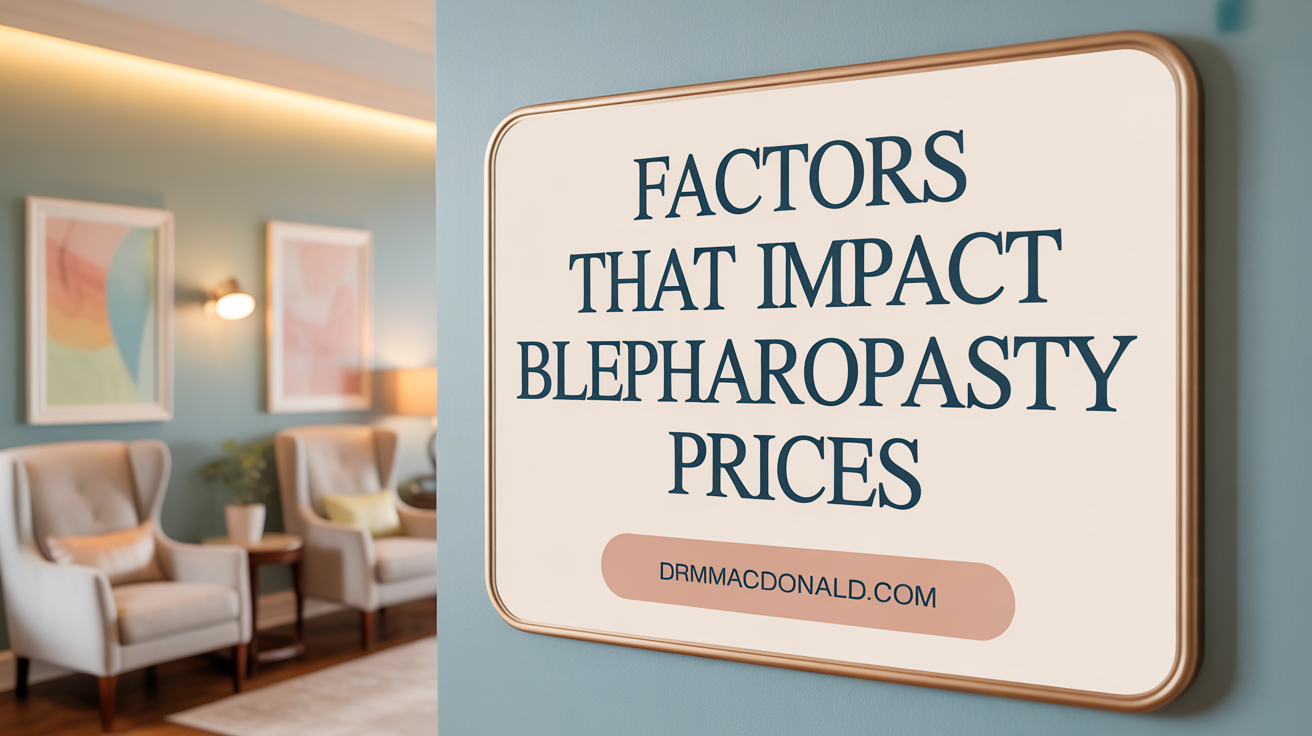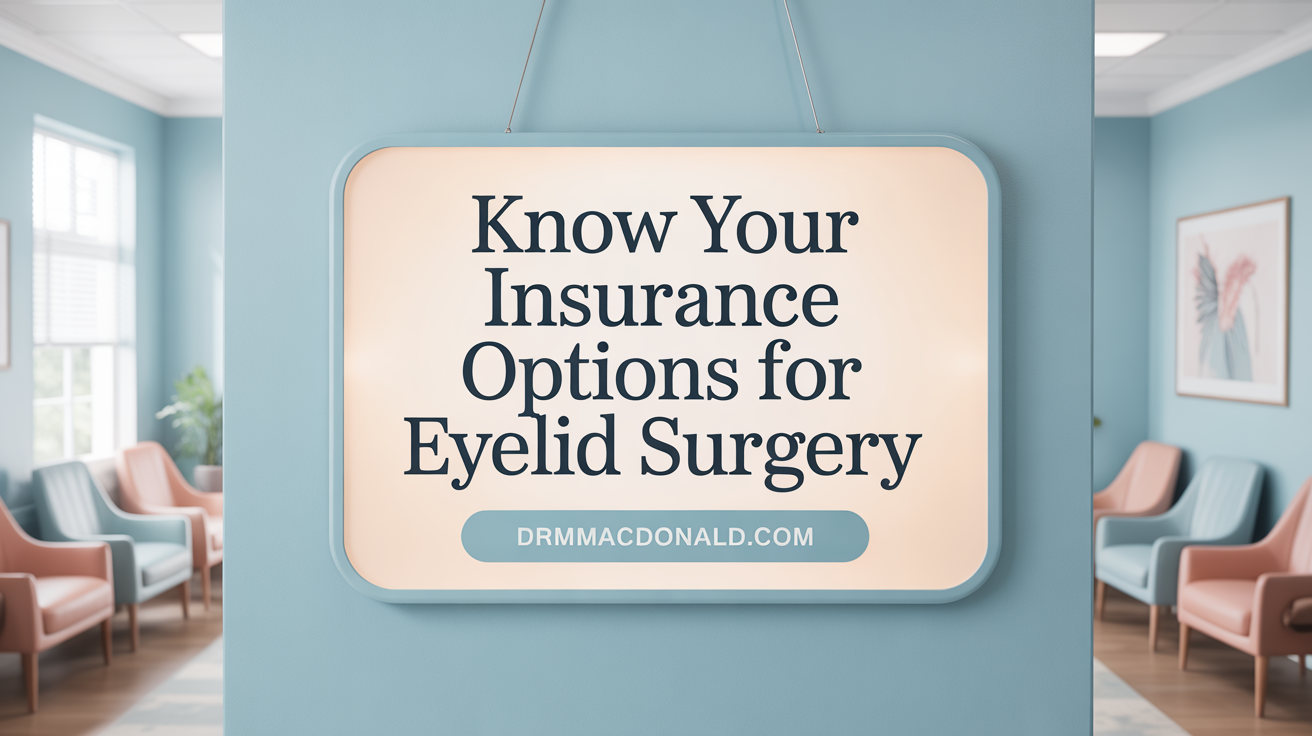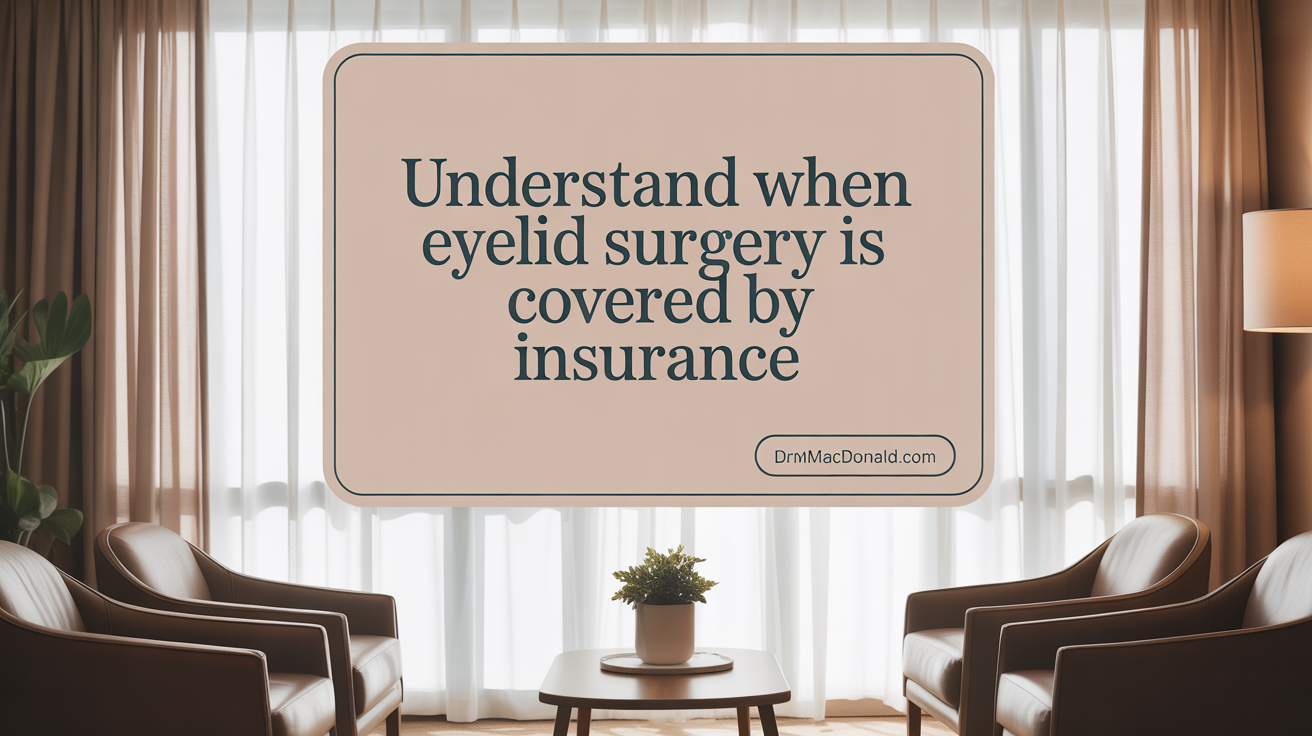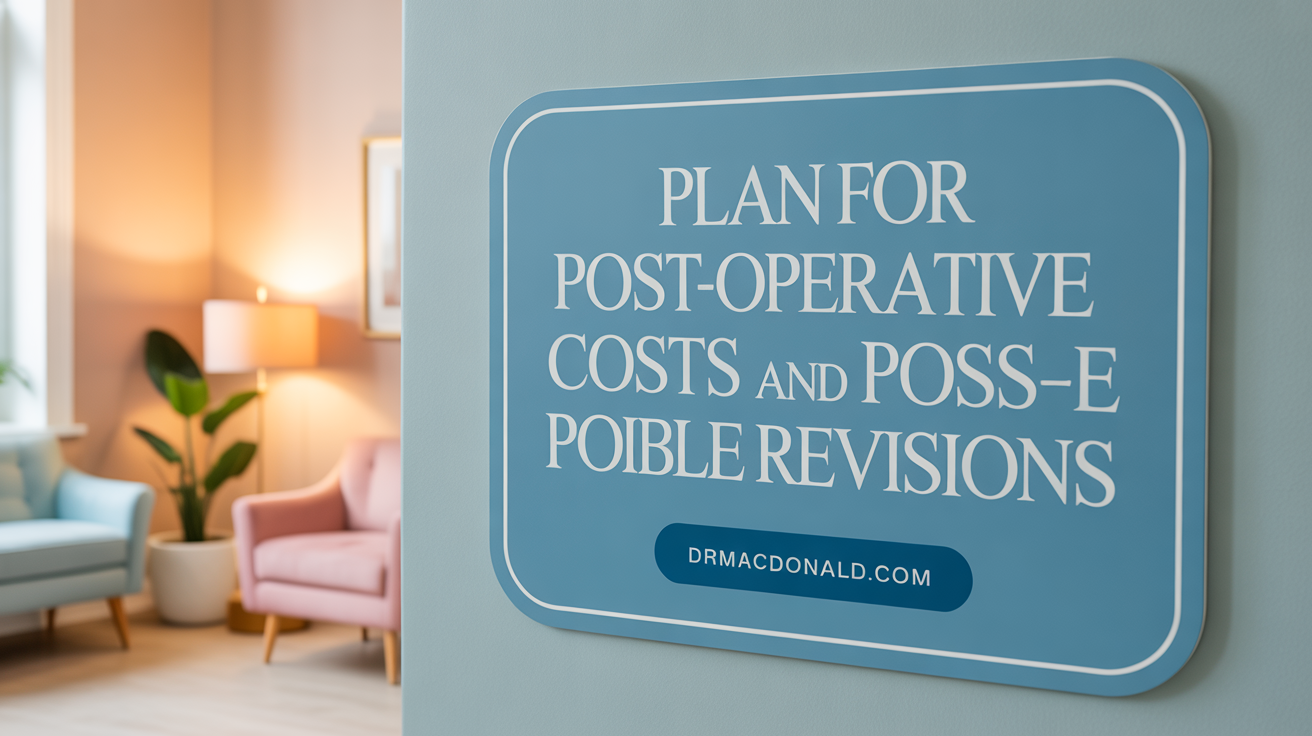Understanding Blepharoplasty: Beyond the Basics
Blepharoplasty, commonly known as eyelid surgery, is a popular cosmetic procedure aimed at rejuvenating the eye area by removing excess skin, fat, and muscle. Beyond aesthetic improvements, it can also enhance vision when drooping eyelids interfere with sight. However, the financial aspect of this surgery can be complex and is a major consideration for prospective patients. This guide breaks down what you'll really pay for blepharoplasty, from surgeon fees to insurance coverage, helping you plan effectively for the procedure.
Typical Cost Ranges for Blepharoplasty and Eyelid Surgery
The expense for eyelid surgery, including blepharoplasty, generally falls within a broad range depending on various factors such as procedure complexity, surgeon experience, location, and additional services. On average, in the United States, the cost of upper eyelid surgery (upper blepharoplasty) is approximately $3,359, while lower eyelid procedures cost around $3,876.
For those undergoing both upper and lower eyelid surgeries simultaneously, the price can range from $5,000 to over $10,000, reflecting the increased complexity and duration of combined procedures.
Cost ranges can also vary based on geographic location. For example, states like California report higher average costs around $4,582, while Wyoming averages closer to $3,989. Major cities and metropolitan areas tend to have higher prices due to higher overheads and demand.
Additional expenses beyond the surgeon's fee are common. These include anesthesia, operating room or surgical facility charges, medical tests, prescriptions, and post-operative care. Typically, anesthesia costs can add several hundred dollars, especially if general anesthesia is used. Facility fees may range from around $550 to over $1,000.
Most estimates suggest that the total cost of blepharoplasty often falls between $4,000 and $6,000 for standard procedures, but it can vary widely from as low as $2,000 to over $9,000 depending on individual circumstances.
In summary, when considering eyelid surgery, it’s essential to account for all these factors and possible additional costs to arrive at a complete understanding of the investment required.
Breaking Down the Cost Components of Eyelid Surgery
What cost components are included in the price of eyelid surgery?
Eyelid surgery, or blepharoplasty, involves several main cost elements that contribute to the total expense. Understanding these components helps patients anticipate and plan for the financial investment.
The largest part of the cost is the surgeon’s fee. This fee depends on the surgeon’s experience, reputation, and the complexity of the procedure. In the United States, the average surgeon’s fee ranges from $3,500 to $6,000, with more experienced surgeons or those in high-cost areas charging toward the upper end.
Facility and operating room charges are also significant. These include the use of the surgical center or hospital where the procedure takes place. Facility costs can vary from about $550 in outpatient clinics to over $10,000 in hospital settings, depending on the location and the level of care required.
Anesthesia fees are another crucial part of the total cost. The type of anesthesia used—local with sedation or general anesthesia—influences the price. Anesthesia costs usually range from $500 to $1,500, covering the anesthesiologist’s services and equipment.
Beyond these, pre-operative costs such as medical tests (blood work, EKGs, chest X-rays) are necessary to ensure patient safety. Consultation fees prior to surgery may range from $100 to $300, depending on the provider.
Post-operative expenses include medications, follow-up visits, and any additional treatment needed to aid recovery or address complications. Recovery costs vary based on individual healing and whether any revision surgeries are necessary.
In total, patients should expect to budget around $7,000 to $11,000 for eyelid surgery, encompassing surgeon’s fees, facility costs, anesthesia, tests, and follow-up care. Recognizing all these components is essential for making informed financial decisions about eyelid procedures.
Factors That Influence the Overall Price of Blepharoplasty

What factors influence the overall price of blepharoplasty and eyelid surgery?
The cost of eyelid procedures like blepharoplasty varies widely based on several important factors. The specific type of blepharoplasty—whether it involves the upper eyelids, lower eyelids, or both—plays a significant role. Generally, surgeries involving both eyelids tend to be more expensive.
Surgeon’s experience and reputation also impact the price. More seasoned or highly regarded surgeons may charge higher fees, reflecting their expertise and quality of care.
Geographic location is another key element. Prices tend to be higher in major metropolitan areas or regions with a high cost of living, such as Los Angeles or New York City, compared to smaller cities or less expensive regions.
Facility choice influences overall expenses as well. Outpatient clinics are often more affordable than hospital settings, which may have higher operating room and staffing costs.
Anesthesia methods—whether local, sedation, or general anesthesia—add to the total cost, with general anesthesia typically being the most costly option.
Additional expenses include pre-operative tests to ensure patient safety, medications, follow-up visits, and possible revisions if necessary.
Insurance coverage is usually limited to cases where surgery is necessary for medical reasons, such as visual obstruction, which can also affect out-of-pocket costs.
Overall, selecting experienced surgeons, choosing the right facility, and understanding the types of anesthesia used are all important considerations that influence the final price of blepharoplasty.
Search query for more info: factors affecting blepharoplasty cost
Cost Variations Among Different Types of Eyelid Procedures
How does the cost of different types of eyelid procedures vary?
The prices for eyelid surgeries can differ widely depending on the specific procedure, its complexity, and the techniques used. For instance, the average expense for upper eyelid surgery (upper blepharoplasty) stands at about $3,359, while lower eyelid procedures (lower blepharoplasty) cost around $3,876, according to the American Society of Plastic Surgeons. Typically, lower eyelid surgeries tend to be pricier because they may involve longer surgery times and additional anesthesia.
Advanced procedures, such as laser blepharoplasty, are generally more costly than traditional surgical methods. This increase in price is due to the sophisticated equipment required and the need for highly trained surgeons specializing in laser technology. Such techniques also offer benefits like more precise results and quicker recovery times but come with higher fees.
Factors like geographic location and the experience level of the surgeon hugely influence total costs. Major metropolitan areas and highly experienced surgeons tend to charge more. Additional costs include anesthesia services, hospital or surgical center fees, pre-operative tests, and post-surgical care, all of which add to the overall expense.
In summary, the type of eyelid surgery, technique used, and where the procedure is performed are major determinants of cost. Patients should consider these factors when planning their budget for eyelid procedures, ensuring they seek skilled surgeons and comprehensive care for the best outcomes.
Insurance Coverage for Blepharoplasty: What You Need to Know

What insurance coverage and financing options are available for blepharoplasty?
Insurance coverage for blepharoplasty depends largely on whether the procedure is deemed medically necessary or purely cosmetic. Most health insurance plans do not cover cosmetic eyelid surgeries, but they may pay for procedures that address functional impairments, such as drooping eyelids that obstruct vision.
To qualify for insurance coverage, patients need to provide comprehensive medical records and photos that demonstrate how eyelid issues interfere with daily activities or eyesight. Documentation must clearly show that the surgery is medically necessary.
When it comes to financing, individuals have several options. Health Savings Accounts (HSAs) and Flexible Spending Accounts (FSAs) can be used if the eyelid surgery is considered an eligible medical expense. These accounts offer tax advantages, making procedures more affordable.
Other payment methods include medical credit cards, which often offer promotional interest rates. Many clinics also provide payment plans or financing through third-party lenders. Personal savings or loans may be used, and sometimes having a co-signer can help secure favorable financing terms.
Patients should always verify their insurance policy specifics and consult their surgeon to understand coverage options. The surgeon’s office can also assist with paperwork necessary for insurance claims and aid in exploring suitable financing plans.
For further exploration, searching for "insurance coverage for eyelid surgery" can provide detailed information about qualifying conditions and the process for insurance claims.
Qualifying for Insurance Coverage: Medical Necessity Explained

What are the criteria for establishing medical necessity?
Insurance providers typically cover eyelid surgeries, such as blepharoplasty, when there's a clear medical reason, especially if the procedure improves vision. To qualify, the eyelid condition must cause a significant obstruction of the upper visual field that impacts daily activities like driving, reading, or working. This means the eyelids are drooping enough to interfere with normal vision, not just cosmetic concerns.
Doctors assess this through specific clinical evidence, including detailed notes, photographs, and visual tests. The goal is to prove that the eyelid sagging hampers the patient’s ability to see properly, which makes the procedure medically essential rather than purely cosmetic.
What documentation and tests are necessary?
To fulfill insurance requirements, patients usually need several pieces of documentation:
- Physician's detailed notes describing eyelid position and any visual field impairments.
- High-resolution photographs showing the eyelids within less than 2 millimeters of the pupil.
- Visual field tests comparing the patient's vision with eyelids taped versus untaped, showing at least a 12-degree or 30 percent improvement.
- Medical records or reports confirming conditions like trauma, disease, congenital ptosis, or chronic dermatitis that hasn’t responded to medical treatment.
What conditions typically qualify?
Qualifying conditions for medical coverage often include:
- Eyelid drooping or sagging that obstructs the field of vision.
- Congenital ptosis affecting sight.
- Reconstruction following injuries or illness.
- Severe dermatitis or other skin issues refractory to medication. These conditions must be supported by thorough documentation and objective testing.
When are procedures not covered?
Insurance generally does not pay for eyelid surgeries intended solely for aesthetic purposes, such as to enhance appearance without affecting vision. If there’s no demonstrable functional impairment—like obstructed sight—coverages usually won’t apply. The focus is on procedures aiming to correct medical conditions impacting vision or health, not purely cosmetic improvements.
Public Health System Coverage for Eyelid Surgery
When does public health insurance cover blepharoplasty?
Public health systems in many regions may cover blepharoplasty if it is medically necessary rather than purely cosmetic. Coverage is generally available when the surgery addresses functional problems, such as obstructed vision caused by sagging eyelids. To qualify, patients must provide sufficient documentation to demonstrate that their condition impairs daily activities.
Documentation and diagnosis requirements
Patients seeking insurance coverage need comprehensive documentation. This includes photographs of the eyelids, a detailed diagnosis from a qualified ophthalmologist or doctor, and results from visual field tests. These tests measure the extent to which eyelid drooping obstructs the patient's vision.
Medical conditions qualifying for coverage
Insurance typically covers eyelid surgery in cases such as severe ptosis (drooping eyelids), congenital eyelid issues risking amblyopia, trauma or injury to the eyelids, tumors, thyroid disease affecting eyelid position, nerve palsy, and refractory dermatitis that causes skin thickening or other complications.
Coverage limitations for cosmetic procedures
Most public health systems do not cover blepharoplasty performed solely for aesthetic reasons. The surgery must be justified on a functional basis, meaning it must help improve the patient's vision or prevent further health complications. Cosmetic improvements without medical necessity are usually considered elective and are not covered.
Understanding whether your eyelid condition qualifies for coverage requires consultation with healthcare providers familiar with local regulations. Providing the appropriate medical documentation and diagnosis is essential to accessing public health support for blepharoplasty.
Financial Planning Tips for Blepharoplasty Candidates
Budgeting for total expenses
When considering blepharoplasty, it’s important to understand the total costs involved. The average surgical fee for upper eyelid surgery is around $3,359, while lower eyelid procedures cost approximately $3,876, according to the American Society of Plastic Surgeons. These figures typically exclude additional expenses such as anesthesia, operating room fees, medical tests, and post-operative care. Overall, the complete cost can range from $4,000 to over $10,000, depending on the complexity of the procedure and geographic location.
Considering consultation, testing, and post-op care costs
Initial consultation fees vary but are usually between $100 and $300. Pre-operative tests like blood work or EKGs are often necessary to ensure safety and can add to the total cost. Post-surgical expenses include follow-up visits, medications, and possible treatments for complications, which can further increase the total expense. Planning ahead for these associated costs ensures you have a realistic budget.
Evaluating financing and payment options
Many clinics offer financing plans through providers like CareCredit, making it easier to manage the upfront costs. Patients are encouraged to explore payment options, insurance coverage for medically necessary procedures, and potential discounts for bundled treatments. While most insurance does not cover cosmetic eyelid surgery, coverage may be provided if the surgery is needed to improve vision due to drooping eyelids.
Importance of choosing experienced surgeons to avoid costly revisions
Selecting a skilled and experienced surgeon is crucial. A reputable surgeon can execute the procedure effectively, lowering the risk of complications or the need for revision surgery, which can be expensive. Checking credentials, reviews, and prior work helps ensure a safe outcome, ultimately saving costs and preventing additional procedures.
| Cost Factors | Typical Range | Details |
|---|---|---|
| Surgeon’s fee | $3,500 – $6,000 | Based on experience and location |
| Anesthesia | $400 – $1,500 | General or local anesthesia costs |
| Facility fees | $550 – $10,000 | Surgery center vs. hospital |
| Total potential costs | $4,000 – $10,000+ | Varies with procedure complexity |
| Additional expenses | Tests, medications, follow-up | Extra costs to consider during planning |
Being thorough in planning and understanding the financial aspect of blepharoplasty helps ensure you are prepared for all expenses associated with the procedure, leading to a smoother experience.
Recovery Costs and Potential Additional Expenses

Typical post-operative care expenses
Recovering from eyelid surgery involves several costs beyond the surgery itself. Patients usually need follow-up visits, which may include consultation and evaluation fees. Medications prescribed to manage pain, reduce swelling, or prevent infection can add to the overall expense. Additionally, supplies such as ointments, cold packs, and specialized ointments or eye drops are often necessary during recovery.
Cost implications of complications and revision surgeries
Complications, though rare, can lead to extra costs, including additional treatments, medications, or even revision surgeries. Revision procedures are typically more complex and may cost more than the initial surgery, depending on the extent of correction needed. It is essential to be prepared financially for possible unforeseen expenses related to healing issues or unsatisfactory results.
Recovery timeline and influence on expenses
The typical recovery period lasts about one to two weeks, during which patients may experience swelling, bruising, and mild discomfort. Early recovery expenses tend to be higher due to the need for medications, follow-up visits, and possibly rest or special care arrangements. Quicker recovery with minimal complications can reduce overall costs, making the choice of surgeon and post-op care plan an influential factor.
Impact of combined facial procedures on overall costs
Many patients opt to combine eyelid surgery with other facial procedures like brow lifts or facelifts. While this approach may increase overall expenses, it can be more cost-effective than separate surgeries. Combining surgeries often reduces cumulative anesthesia and facility fees, and leads to a single recovery period. However, it also means planning for a higher total cost upfront, which varies based on the complexity and scope of the combined procedures.
Final Thoughts on Understanding Eyelid Surgery Costs
Blepharoplasty is a transformative procedure that offers both aesthetic and functional benefits, but understanding its true cost involves much more than the initial surgeon's fee. Prospective patients should carefully consider all cost components including anesthesia, facility fees, testing, and recovery expenses, as well as potential financing and insurance coverage based on medical necessity. Regional variations, surgeon expertise, and the type of procedure performed can greatly influence the overall price. Armed with comprehensive cost knowledge and proper financial planning, individuals can approach eyelid surgery with confidence and clarity, ensuring the best possible outcomes both financially and surgically.
References
- Eyelid Surgery Cost - American Society of Plastic Surgeons
- How Much Does Blepharoplasty (Eyelid Surgery) Cost? - CareCredit
- How Much Does Eyelid Surgery Cost? - GoodRx
- Cost Analysis of Eyelid Surgery: What to Expect - The Naderi Center
- How to Qualify for Eyelid Surgery? Cost of ... - Ashley Howarth, MD
- How Much Does Blepharoplasty (Eyelid Surgery) Cost ... - Aedit.com
- How Much Does Eyelid Surgery Cost Now? - RealSelf.com
- Laser vs. Traditional Eyelid Surgery Costs Comparison - Dr. Bustillo
